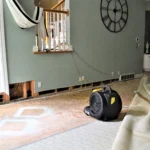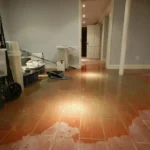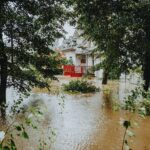Introduction
Water damage can happen suddenly, whether from a leaking roof, burst pipe, or heavy rain. After you complete water damage restoration, it might feel like the problem is over. However, if not handled carefully, mold can grow quickly after the water is gone. Mold can start forming within 24 to 48 hours if moisture is still present. It not only damages your property but can also cause serious health issues.
In this blog, we will guide you through simple and practical steps to prevent mold growth after water damage restoration. By following these tips, you can keep your home safe, healthy, and mold-free.
Why Mold Grows After Water Damage
When a home suffers water damage, it leaves behind wet surfaces like walls, carpets, and furniture. Mold grows in damp places, especially when water is not fully removed. Even small amounts of leftover moisture can lead to mold problems.
Mold spores are always in the air, but they need moisture to grow. This is why it’s essential to make sure your home is completely dry after water damage restoration. Acting quickly and drying the area thoroughly can stop mold from spreading.
Quick Drying Is Key to Mold Prevention
One of the most important ways to prevent mold is by drying out the affected areas as soon as possible. Using fans, dehumidifiers, and professional drying equipment will speed up the drying process. Don’t rely on air drying alone it often isn’t enough.
Professional water damage restoration companies use special tools to detect moisture hidden inside walls, floors, and ceilings. Drying these hidden areas quickly can prevent mold from taking hold.
Check Hidden Moisture Spots
After visible water is cleaned, hidden moisture can remain in places you might not notice. Mold often grows in these hidden areas, including
- Behind walls
- Under floors
- Inside carpets
- Around baseboards
It’s essential to have a thorough inspection done by a water damage restoration expert to find moisture in these spots. Leaving hidden moisture can allow mold to grow even when everything looks dry on the surface.
Keep Humidity Levels Low
Humidity is a key factor that helps mold grow. After water damage restoration, you should control the humidity levels in your home. Try to keep indoor humidity below 50%.
Use a dehumidifier, especially in areas like basements, bathrooms, and laundry rooms where moisture can build up. Keeping your home dry and well-ventilated makes it harder for mold to develop.
Clean and Sanitize Affected Areas
Cleaning is an important part of the process after water damage restoration. Even if the water is gone, bacteria and mold spores might still be present.
Disinfect all areas that were affected by water. Using mold-killing cleaners on walls, floors, and furniture helps remove spores and prevents mold from returning. Proper cleaning gives your home a fresh, safe start after water damage.
Remove Items That Can Hold Moisture
Certain items like carpets, rugs, upholstered furniture, and insulation can stay wet longer than you think. Sometimes, these items cannot be fully dried and should be removed to stop mold growth.
A professional water damage restoration team can help you decide which materials can be saved and which need to be replaced. Removing moisture-holding items quickly is one of the best ways to prevent future mold problems.
Schedule Follow-Up Inspections
Even after drying, cleaning, and repairs, mold can still appear later if something was missed. It’s a smart idea to schedule a follow-up inspection with a water damage restoration company.
They can check for leftover moisture and signs of mold that may develop over time. Early detection gives you a chance to fix the problem before it spreads.
Final Thoughts
Preventing mold after water damage restoration takes careful steps and attention to detail. Fast drying, regular inspections, cleaning, and humidity control are key to protecting your home. Working with trusted professionals ensures the job is done right and keeps your family safe.
When you take quick action and follow these simple tips, you can stop mold from becoming a problem after water damage.
FAQs About Preventing Mold After Water Damage Restoration
Q1: How fast can mold grow after water damage?
Mold can start growing within 24 to 48 hours if the area stays wet. This is why fast drying during water damage restoration is very important.
Q2: Do I need to replace carpets after water damage?
It depends on how much water was involved. In many cases, carpets need to be removed because they hold moisture that can cause mold even after water damage restoration is complete.
Q3: Can I prevent mold by just opening windows?
Opening windows can help air out your home, but it’s not enough by itself. You also need fans, dehumidifiers, and professional drying to prevent mold after water damage restoration.
Q4: How can I tell if moisture is still inside my walls?
Professional water damage restoration companies use special tools like moisture meters to detect hidden water behind walls and floors.
Q5: Does insurance cover mold after water damage?
Some homeowner insurance policies cover mold caused by sudden water damage, but not all. It’s best to check your policy or ask your insurance company directly.




